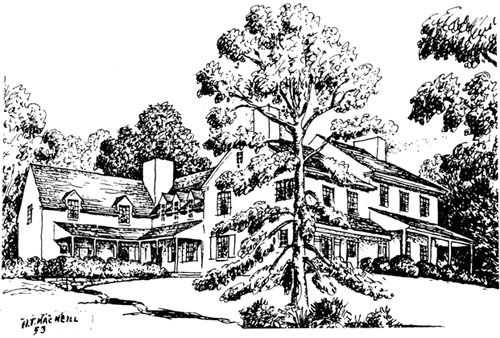|
Home : Quarterly Archives : Volume 19 |
Tredyffrin Easttown Historical Society |
|
Source: April 1981 Volume 19 Number 2, Pages 37–40 A Letter from Valley Forge On April 30, 1778, while quartered in the home of the Reverend William Currie on Yellow Springs Road, from "Camp Valley forge" Major General William Alexander, Lord Stirling, made out an account to "The United States of America, Dr.". In it he summarized certain monies which he alleged were due him as a result of the loss of personal property while in battle with the Continental Army. (The original of this document is in the collection of the Rosenbach Museum and Library in Philadelphia. It is reproduced on the next page, slightly reduced in size, with its special permission.) Lord Stirling was earlier a member of the New Jersey Provincial Council and a secretary to the governor, to whom he had voiced his opposition to the Stamp Act, By the eve of the Revolution, he was a prominent Whig, despite being a person of considerable wealth and social position. He was appointed a brigadier general on March 1, 1776, and a week later succeeded Charles Lee as commander in New York. There he directed the construction of defensive positions, including both Fort Washington and Fort Lee, On February 19, 1777 he was promoted to the rank of major general. His account from Valley Forge is not only a record of monies allegedly due him, but also provides a short summary of his service in the Army — at Long Island, where he was taken prisoner; at Trenton; and at Germantown — up to that time.
From the original in the collection of the Rosenbach Museum & Library, Philadelphia The United States of America, Dr. To Major General William Earl of Stirling
For Two horses, Saddles and Bridles lost
For the Baggage & Furniture left at
For Two very good horses Saddles and bridles
For one very fine horse killed under me
For a very neat Silver mounted Fusee a Camp Valley forge April 30, 1778 While William Alexander called himself — and was generally known as — Lord Stirling, his claim to the earldom was, in fact, disallowed by the Privy Council of the House of Lords in England in 1762. David Taylor, while historian of the Freedoms Foundation of Valley Forge, gave an account of Alexander's claim to the title. After careful research, Taylor concluded that "William Alexander was entitled to the Earldom of Stirling and ... went to England to lay his claim, mostly because of the vast lands of Nova Scotia which went along with the title and which he felt definitely belong[ed] to the colonies if he could manage it. He pressed his claim to the title and in 1756 the case was heard in Edinburgh; a jury found him to be the rightful Earl of Stirling, He was three times proclaimed the Earl from the Market Cross. "The Privy Council of the House of Lords had no intention of letting Nova Scotia lands go to the colonies and disallowed his claim; but, with proviso that Stirling file for a new patent which would give him the title without the land. He did not wish to do that and returned to the Colonies. All the people of his time regarded his claim as legitimate and they called him and wrote about him and to him as Lord Stirling." It was Lord Stirling's report, in the fall of 1777, of a remark made by Col. James Wilkinson, quoting a sentence from a letter from Inspector General Thomas Conway to Major General Horatio Gates, that led to the early discovery and stifling of the so-called "Conway Cabal" to replace General Washington as commander of the Continental Army. After the army left Valley Forge, General Lord Stirling distinguished himself at the Battle of Monmouth in June 1778, He also directed the unsuccessful Staten Island Expedition in January 1780. In addition, Lord Stirling presided over the court martial of General Lee following the Battle of Monmouth, and also served on the board of inquiry of John Andre. In October 1781 he was given command of the Northern Department, with headquarters in Albany, where he was responsible for the preparation of defenses against a possible British attack from Canada. He died in Albany on January 15, 1783.
Headquarters of Major General Lord Stirling |

